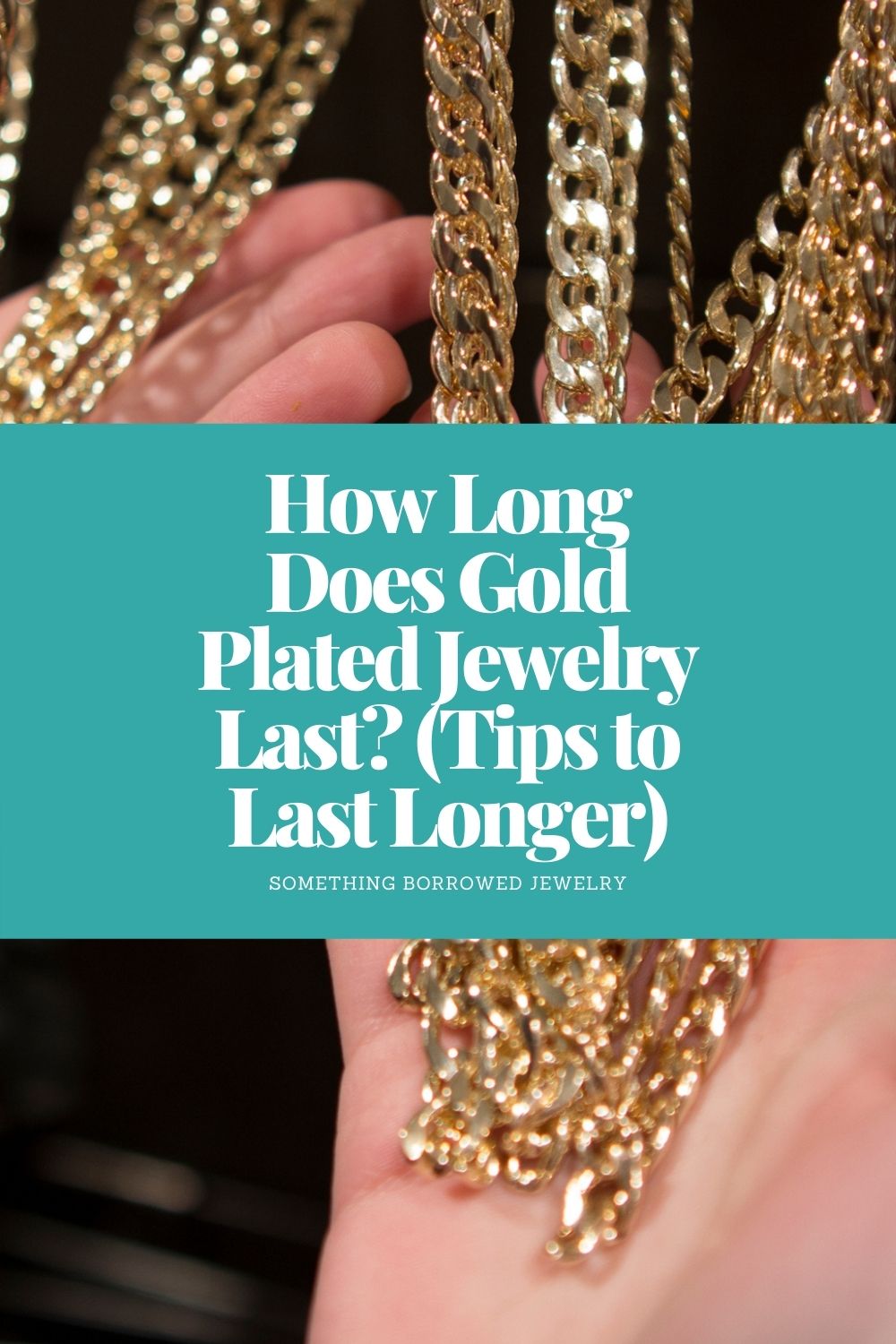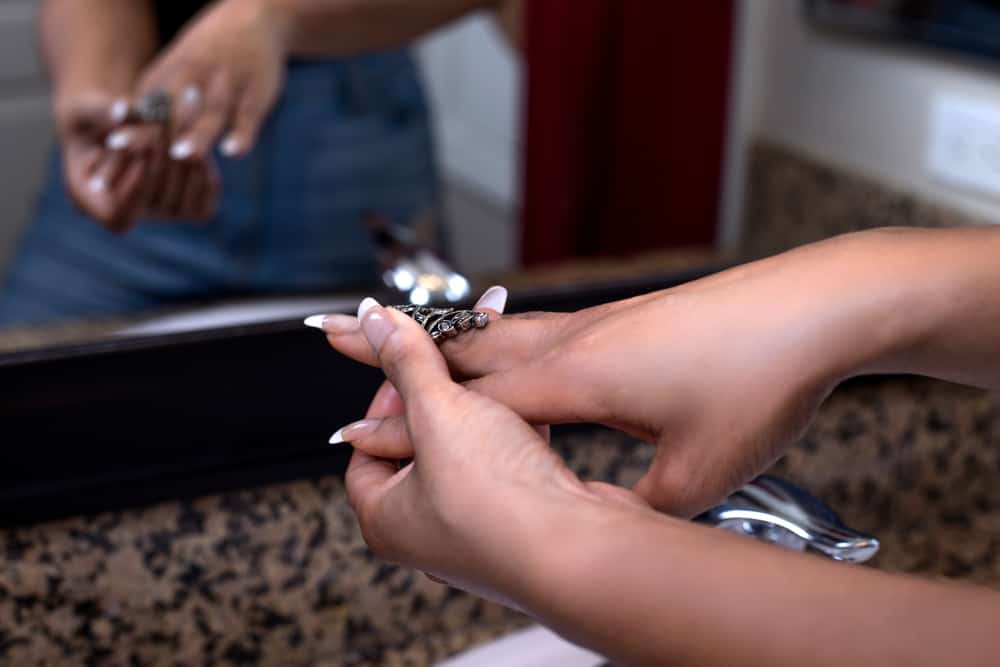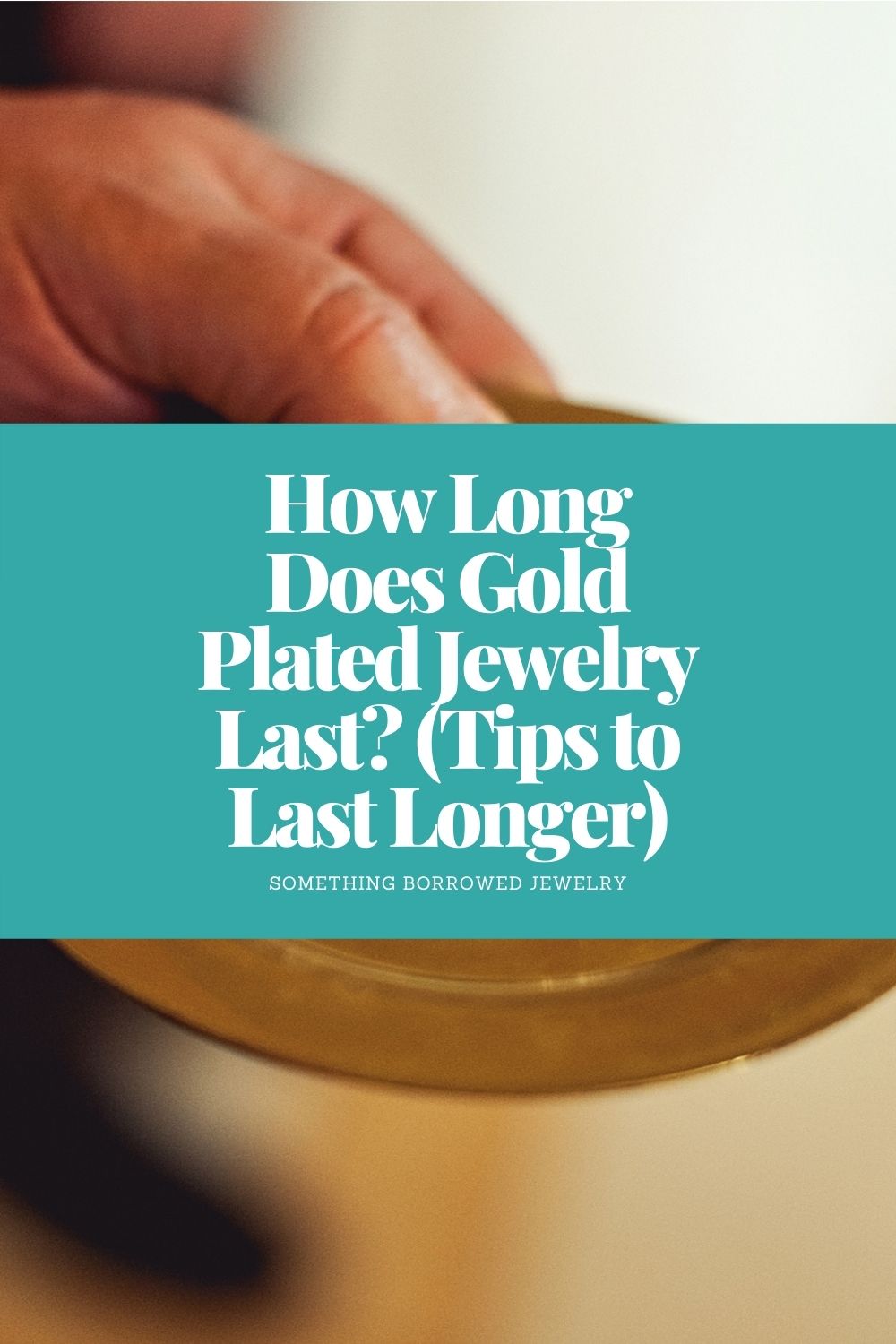Are you a jewelry enthusiast? Besides the cost of buying a classic piece of jewelry, one can be overwhelmed when selecting which piece to purchase? Although a jewelry fanatic would prefer purchasing the best and finest gold jewelry, the budget may not allow it.

Purchasing gold-plated jewelry is a perfect option when looking for on-budget jewelry. The accessory might be a bracelet, ring, or necklace, among others. Old plating is the process of placing a thin layer of gold to cover another metal surface.
How Long Does Gold Plated Jewelry Last?
Since several factors affect the lifespan of gold-plated jewelry, it may be hard to determine how long it can last.
For example, thick plated jewelry may last longer than thin plating. Gold-plated jewelry lasts for approximately two years before the gold plating starts to tarnish and wear down. However, the items’ lifespan depends on their maintenance and care.
This article explains essential tips for making gold-plated jewelry last longer as it maintains its pleasant appearance.
Know When to Remove and Wear the Jewelry
 something borrowed
something borrowed
Jewelry is usually a delicate accessory, regardless of the material used to make it. Therefore, a person should always remove their jewelry when engaging in activities that may interfere or make contact with it, for instance, activities that involve the use of abrasives or chemicals.
You should remove your jewelry when:
- Swimming, especially in water treated using chlorine
- Undertaking cleaning activities at home
- Playing sports, mainly contact sports
- Working in the garden
It would help if you observed the following tips when wearing your jewelry.
1. Put Your Jewelry as the Last Item
It is tempting to put your jewelry first as you prepare for a night out or get dressed in the morning. However, it would help if you waited until you are entirely dressed before putting on your jewels.
Regardless of the type of jewelry you are wearing, chemicals from your hair products, make-ups, and perfumes can damage the jewelry. Therefore, it’s best to wear the jewelry as the last item.
2. Avoid Wearing Lotion with Jewelry
Although rare exposure of jewelry to body and hand lotion may not damage various fine jewelry, it may destroy the costume and finished pieces. Additionally, the build-up of lotion products can cause frequent cleaning of your jewelry. It would help if you considered putting lotion on your body or hands after removing the jewelry at night.
3. Avoid Sleeping With the Jewelry
You should always avoid sleeping with gold-plated earrings and necklaces. When at sleep, you may sweat since body temperatures differ with time and weather. This may cause the gold-plated jewelry to be soaked on the seat, causing it to fade.
Therefore, you should always remove your jewelry before going to sleep. This can save the jewelry’s artificial shine.
4. Travel with a Jewelry Case
Most jewelry fanatics cannot leave their houses without wearing the items. Since you may travel away from your home for vacations, seminars, or any other occasion, you should consider carrying a travel jewelry storage case.
Although much emphasis is put on the typical storage, travel storage is equally important. Tossing your jewelry in a suitcase or toiletry paper can cause severe damage to your accessories.
You can protect your jewelry by using specially designed travel rolls or cases of jewelry to keep your valuable accessories tangle-free and safe.
Avoid Exposing the Jewelry to Chemicals, and High Amount of Light and Heat
Chemical exposure of previous gold-plated jewelry can discolor or damage it. Furthermore, ordinary substances such as lotions, hairsprays, perfumes, or other cosmetics which contain chemicals can damage your gold-plated jewelry by permanently damaging its surface.
You should always remove your jewelry before using cosmetics and household cleaners to protect the jewelry’s classy appearance and enhance its durability. Most household cleaning substances contain ammonia, which may be very corrosive with some metals.
Chlorine bleach is also another household solvent that can destroy plated gold or a gold alloy.
Just like the sun’s destructive rays can cause harm to a person’s skin, heat and light can affect the appearance and the durability of jewelry. When exposed to extreme heat or light over time, the jewelry may fade, reducing its durability. This makes gold-plated jewelry lose its stylish nature.
Sudden temperature changes and excessive pressure may also fracture gold-plated gems. Heat may easily get rid of the natural moisture needed by these gems to maintain their appealing appearance. They may discolor, crack, or dry out. This negatively affects their elegance.
Use Safe and Easy Cleaning Methods When Cleaning a Tarnished Jewelry
Most tarnished jewelry can be cleaned with a soft brush, mild dish soap, and warm water. You can also use soft, lint-free clothing or pulsed-water dental cleaning equipment.
Make sure you rinse your gold-plated jewelry in a glass of water to get rid of the cleaning solution to avoid losing some jewelry pieces or the whole jewelry if you rinse it in an open sink.
Use a new and clean makeup brush plus warm and soapy water to clean the jewelry softly. Then, lay the jewelry on a towel to dry. Ensure that the jewelry dries completely before storing or wearing it. It would help if you considered cleaning the jewelry once in a while to remove dirt.
After cleaning your jewelry, you should allow it to dry thoroughly. When you clean your jewelry, the piece may appear good to pat it dry with a chamois and then store the piece. However, tiny bits of moisture left on the accessory after cleaning can damage your item.
After cleaning your piece, you should wait for at least one hour before putting the jewelry in its case or box. This allows the moisture in the item to evaporate completely.
Store Your Jewelry safely and separately, and Avoid Placing it on Hard Surfaces
Although many people overlook proper jewelry storage, it is an essential element in maintaining the quality and durability of the jewelry. You should always avoid tossing the jewelry on top of a dresser or into a drawer. This can cause damage or scratches.
Most jewelry accessories come in a pouch or a box from the shop. Some stores may also provide anti-tarnishing clothes or bags. Jewelry boxes with customized padded slots for rings and necklaces and bracelet hanging posts are also perfect for storage.
It would help if you also store your jewelry pieces separately. Despite being extra careful with your jewelry when wearing it, it may sustain some scratch damage, such as scratches on its surfaces.
Mostly, this results from knocking and tangling the pieces. The best solution to this problem is to store your accessories separately to prevent them from contacting each other.
The following are some storage ideas:
- A jewelry tree for earrings and necklaces
- Separate cloth pouches for vintage or precious items
- Jewelry armoires for any accessory
- Customized jewelry cases for valuable items
- Tarnish-resistant jewelry bags
Putting gold-plated jewelry on a hard surface may cause scratches, and this leads to automatic fading. It can help if you put your jewelry on smooth surfaces and without tangling with other items. This guarantees the safety of your jewelry.
When removing jewelry when you are at home, you may be tempted to misplace it due to fatigue after having a busy schedule. However, this may cause the jewelry to lose its elegance since the sheen may go away with the gold plating of the accessory.
Check Your Pieces Regularly
As you put on and store your jewelry, it is easy for it to get damaged or dirty. Before you wear jewelry pieces such as necklaces or earrings, observe them keenly. This will enable you to identify pieces that need repair or cleaning.
Taking keen observation of jewelry will help you identify the following:
- Whether the pieces of jewelry are held solidly
- If the jewelry has a clasp and whether it is secure
- Whether the jewelry is beautiful and sparkling
- Whether the accessory has scratches or any other form of damage
- Whether the item has tarnish or other finishing issues
Checking the jewelry enables a person to determine whether there is a need to seek professional help or not. Although you can do minor repairs and clean the jewelry at home, some repairs require services from a professional jeweler.
If you experience the following issues, take your jewelry to an expert.
- Deep scratches
- Loose gems in fine jewelry or vintage costume pieces
- Dirt or Dust build-up that you can’t reach
- Lost parts
- Broken chain links or clasps
A jewelry expert will help you fix your item to restore your item’s beauty and sparkling. They can also advise you on how to take good care of your jewelry to avoid future frustrations.
Make a Jewelry Care Kit
There are many tools for performing different tasks both professionally and at home. Tools are kept in one area to avoid the hassle of finding them in different places and possible misplacements.
Therefore, there is a need to make a jewelry care kit. Although this is a simple exercise, it can save you from unnecessary frustrations.
It would help if you considered putting all your jewelry care supplies in one area. This allows you to clean and repair your accessories without struggling to hunt down materials and tools.
You can make a simple jewelry care kit using a plastic storage container.
The following items should be placed inside the container:
- Commercial jewelry cleaners
- Soft-bristled brush for reaching the crevices of the item
- Lenient chamois material for dying and polishing
- Glue for reattaching gems to low-priced costume jewelry
- Rubbing alcohol for hard metals and gems
- Q-tips for polishing unreachable spots
As a jewelry enthusiast, you should always ensure that your item remains beautiful and sparkling. Taking good care of your jewelry can prolong its lifespan. Besides, some jewelry is costly; hence there is a need to ensure that it does not lose its value.
The above tips can help you to prolong the lifespan of your jewelry. If you have any questions or queries, you are welcome to comment. Factors that affect jewelry’s lifespan include:
- The storage of the jewelry
- The method used to clean jewelry
- How a person wears the item
- The quality of the jewelry
- General care

Ten articles before and after
50+ Meanings of Gold (What Gold Means in History, Business, Religion, Politics, Psychology)
What is Rolled Gold? Is It Worth Your Money?
How Much is a 1963 Ben Franklin Half Dollar Worth? (Price Chart)
What Is A Baguette Diamond? (History, Pros & Cons)
What is a CVD Diamond? (Definition, Cost & Benefits)
What is Edible Gold? (History, Types & Nutritional Facts)
How Much is a 1950 Wheat Penny Worth? (Price Chart)
How Much is a 1942 Wheat Penny Worth? (Price Chart)


